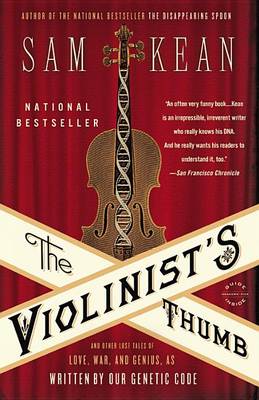Reviewed by elvinagb on
Reading updates
- Started reading
- 7 August, 2012: Finished reading
- 7 August, 2012: Reviewed

Did the human race almost go extinct? Can genetics explain a cat lady's love for felines? How does DNA lead to people with no fingerprints or humans born with tails? And how did the right combination of genes create the exceptionally flexible thumbs and fingers of a truly singular violinist?
Unravelling the genetic code hasn't always been easy - from its earliest days, genetics has been rife with infighting, backstabbing and controversial theories - but scientists can now finally read the astounding stories inscribed in our DNA. As we make advances into DNA mapping and modification, genetics will continue to be the hottest topic in science, shaping the very make-up of our bodies and the world around us.
With the same masterful combination of science, history and culture he brought to The Disappearing Spoon, Sam Kean untangles the secrets of our genetic code, explaining how genetics has shaped our past and how DNA will determine humankind's future.